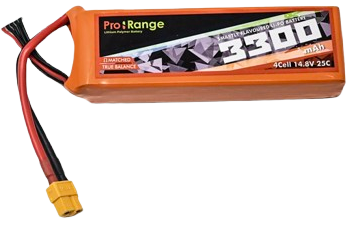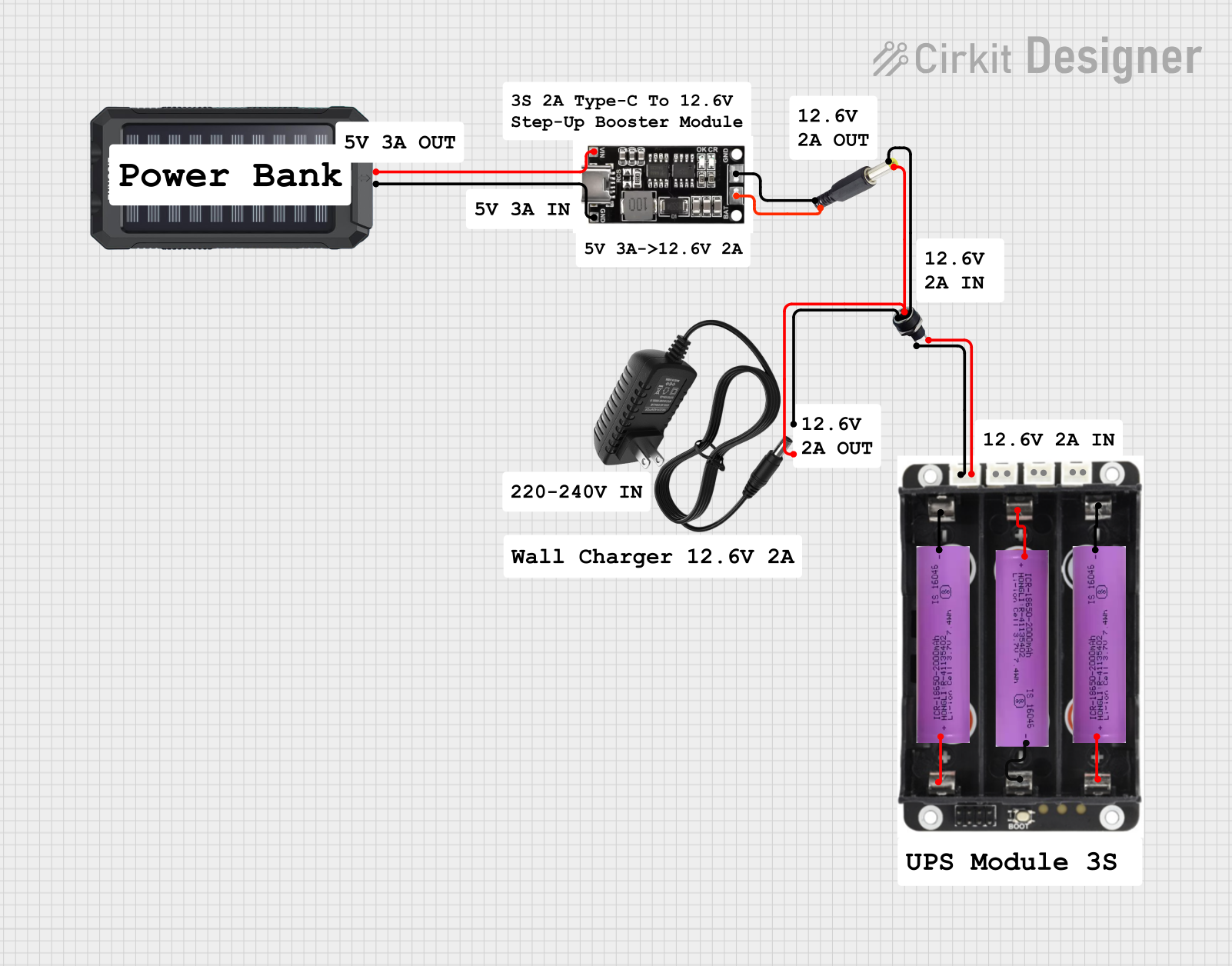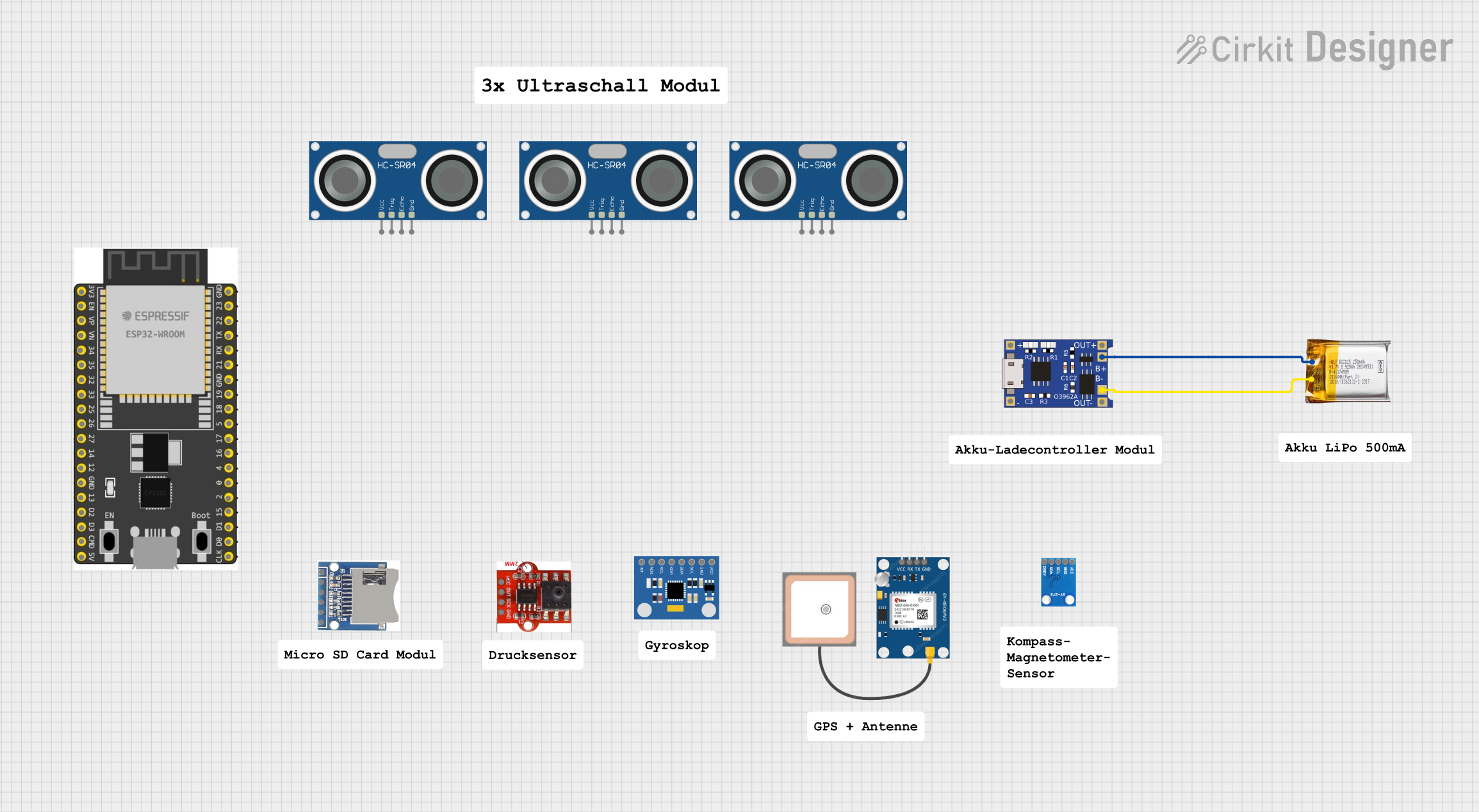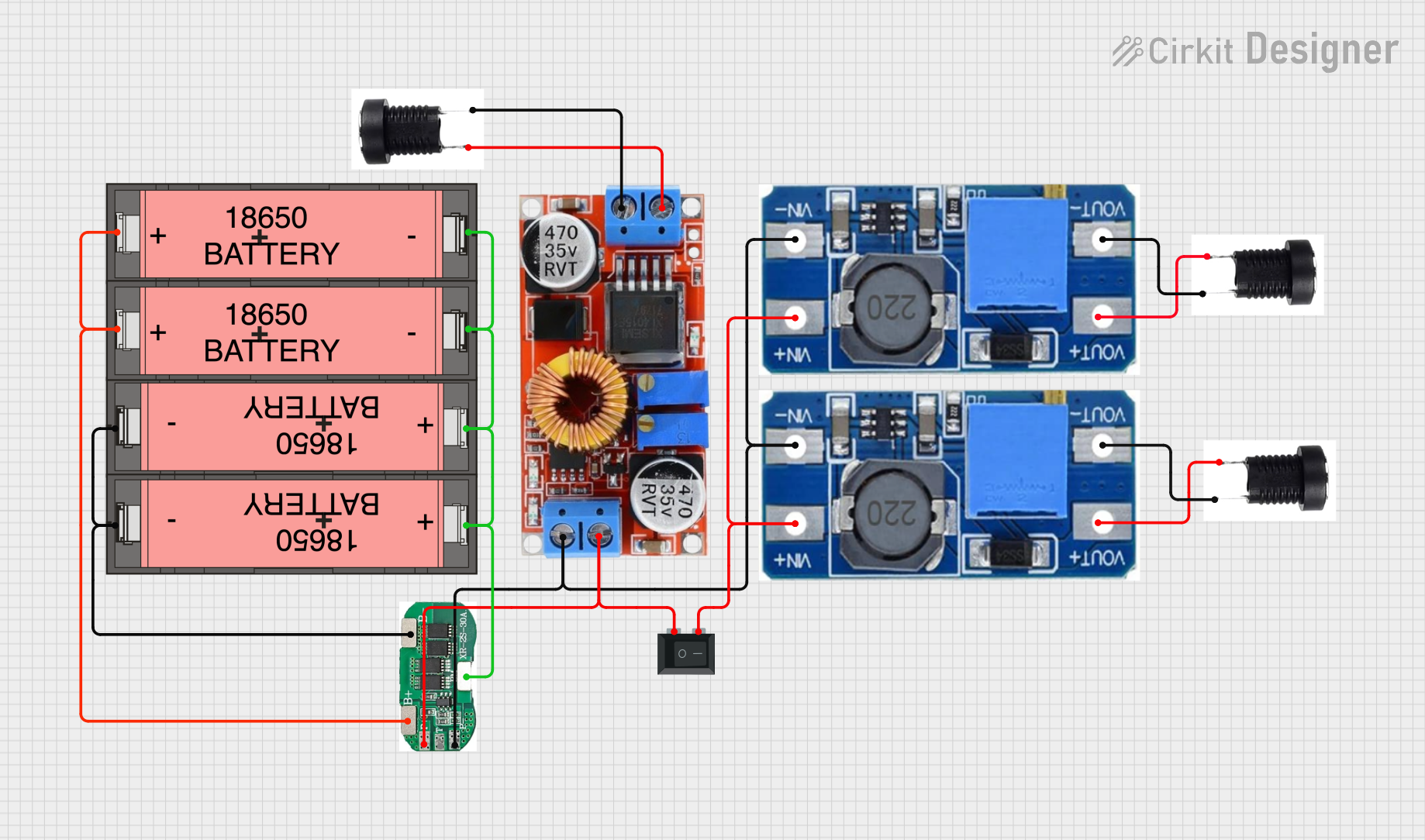
How to Use Lipo 3300 mAh: Examples, Pinouts, and Specs

 Design with Lipo 3300 mAh in Cirkit Designer
Design with Lipo 3300 mAh in Cirkit DesignerIntroduction
The Pro Range Lipo 3300 mAh is a high-performance lithium polymer (LiPo) battery designed for applications requiring lightweight, compact, and high-capacity power sources. With a capacity of 3300 milliamp hours (mAh), this battery is ideal for powering remote-controlled (RC) vehicles, drones, and portable electronic devices. Its high energy density and discharge rate make it a popular choice for demanding applications where performance and reliability are critical.
Explore Projects Built with Lipo 3300 mAh

 Open Project in Cirkit Designer
Open Project in Cirkit Designer
 Open Project in Cirkit Designer
Open Project in Cirkit Designer
 Open Project in Cirkit Designer
Open Project in Cirkit Designer
 Open Project in Cirkit Designer
Open Project in Cirkit DesignerExplore Projects Built with Lipo 3300 mAh

 Open Project in Cirkit Designer
Open Project in Cirkit Designer
 Open Project in Cirkit Designer
Open Project in Cirkit Designer
 Open Project in Cirkit Designer
Open Project in Cirkit Designer
 Open Project in Cirkit Designer
Open Project in Cirkit DesignerCommon Applications
- RC vehicles (cars, boats, planes)
- Drones and quadcopters
- Portable electronic devices
- Robotics and DIY electronics projects
- Backup power for small systems
Technical Specifications
The following table outlines the key technical details of the Pro Range Lipo 3300 mAh battery:
| Specification | Value |
|---|---|
| Battery Type | Lithium Polymer (LiPo) |
| Capacity | 3300 mAh |
| Nominal Voltage | 11.1V (3S configuration) |
| Maximum Voltage | 12.6V (fully charged) |
| Minimum Voltage | 9.0V (discharge cutoff) |
| Discharge Rate (C-rating) | 30C |
| Maximum Continuous Current | 99A (3300 mAh × 30C) |
| Connector Type | XT60 (default) |
| Dimensions | 105mm × 35mm × 25mm |
| Weight | 210g |
| Charging Method | CC/CV (Constant Current/Constant Voltage) |
| Recommended Charge Rate | 1C (3.3A) |
| Maximum Charge Rate | 2C (6.6A) |
Pin Configuration and Descriptions
The Pro Range Lipo 3300 mAh battery typically includes two connectors: a main power connector and a balance connector. The pin configurations are as follows:
Main Power Connector (XT60)
| Pin | Description |
|---|---|
| Positive (+) | Supplies positive voltage to the load |
| Negative (-) | Supplies ground to the load |
Balance Connector (JST-XH, 4-pin for 3S)
| Pin | Description |
|---|---|
| Pin 1 | Ground (connected to cell 1 negative terminal) |
| Pin 2 | Cell 1 positive / Cell 2 negative |
| Pin 3 | Cell 2 positive / Cell 3 negative |
| Pin 4 | Cell 3 positive |
Usage Instructions
How to Use the Component in a Circuit
Connecting the Battery:
- Use the XT60 connector to connect the battery to your device or power distribution board.
- Ensure the polarity matches the device's input to avoid damage.
- Use the JST-XH balance connector for charging or monitoring individual cell voltages.
Charging the Battery:
- Use a LiPo-compatible charger with a balance charging feature.
- Set the charger to the correct cell count (3S) and charge rate (recommended: 3.3A).
- Connect both the XT60 and JST-XH connectors to the charger for safe and balanced charging.
Discharging the Battery:
- Avoid discharging below 9.0V to prevent damage to the cells.
- Monitor the voltage during use with a voltage alarm or telemetry system.
Mounting:
- Secure the battery in your device using a Velcro strap or battery holder.
- Avoid placing the battery near sharp edges, heat sources, or moving parts.
Important Considerations and Best Practices
- Storage: Store the battery at 50% charge (approximately 11.4V) in a cool, dry place.
- Safety: Never puncture, crush, or short-circuit the battery. Use a LiPo-safe bag for charging and storage.
- Temperature: Operate the battery within the temperature range of 0°C to 50°C. Avoid overheating.
- Inspection: Regularly inspect the battery for swelling, damage, or loose connectors.
Example: Using with Arduino UNO
The Pro Range Lipo 3300 mAh can power an Arduino UNO via a voltage regulator or a DC-DC step-down converter. Below is an example of connecting the battery to an Arduino UNO:
Circuit Diagram
- Connect the XT60 connector to a DC-DC step-down converter.
- Set the converter output to 5V.
- Connect the converter's output to the Arduino UNO's 5V and GND pins.
Sample Code
// Example code to read a sensor and send data via serial
// Ensure the Arduino is powered by the LiPo battery through a step-down converter
const int sensorPin = A0; // Analog pin connected to the sensor
int sensorValue = 0; // Variable to store the sensor reading
void setup() {
Serial.begin(9600); // Initialize serial communication at 9600 baud
}
void loop() {
sensorValue = analogRead(sensorPin); // Read the sensor value
Serial.print("Sensor Value: ");
Serial.println(sensorValue); // Print the sensor value to the serial monitor
delay(1000); // Wait for 1 second before the next reading
}
Troubleshooting and FAQs
Common Issues and Solutions
Battery Not Charging:
- Cause: Incorrect charger settings or damaged balance connector.
- Solution: Verify the charger is set to 3S mode and the correct charge rate. Inspect the connectors for damage.
Battery Swelling:
- Cause: Overcharging, over-discharging, or overheating.
- Solution: Stop using the battery immediately. Dispose of it safely following local regulations.
Device Shuts Down Prematurely:
- Cause: Voltage drops below the device's cutoff threshold.
- Solution: Ensure the battery is fully charged before use. Check for excessive current draw.
Battery Not Providing Enough Power:
- Cause: Exceeding the battery's discharge rate.
- Solution: Use a battery with a higher C-rating or reduce the load on the battery.
FAQs
Q: Can I charge the battery at a higher rate than 1C?
A: Yes, the battery supports up to 2C (6.6A), but charging at 1C is recommended for longer lifespan.Q: How do I know when the battery is fully charged?
A: The charger will indicate "fully charged" when the voltage reaches 12.6V.Q: Can I use this battery for a 12V system?
A: Yes, but ensure the system can handle the voltage range of 9.0V to 12.6V.Q: What happens if I over-discharge the battery?
A: Over-discharging can permanently damage the cells. Use a voltage alarm to prevent this.
By following this documentation, you can safely and effectively use the Pro Range Lipo 3300 mAh battery in your projects.